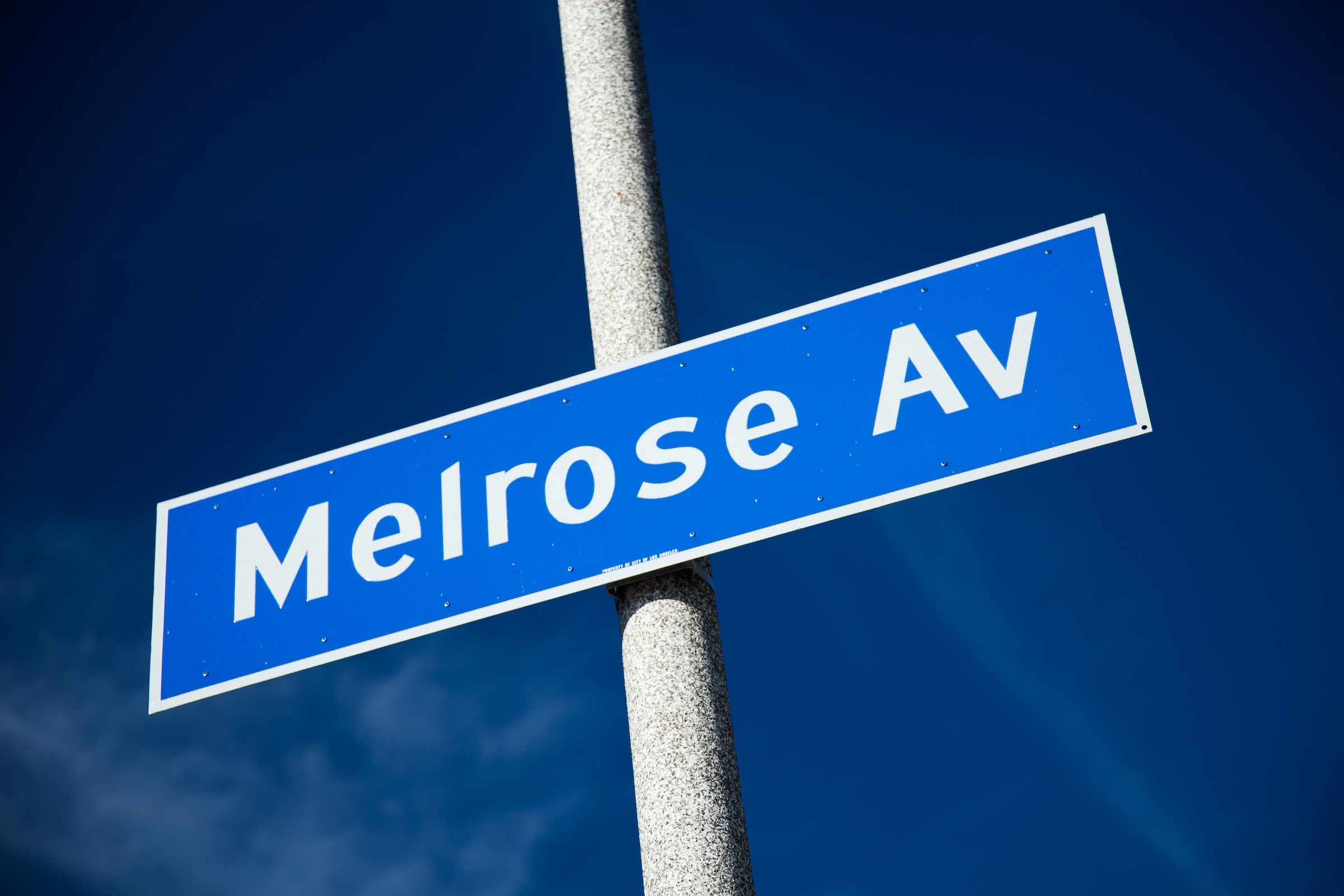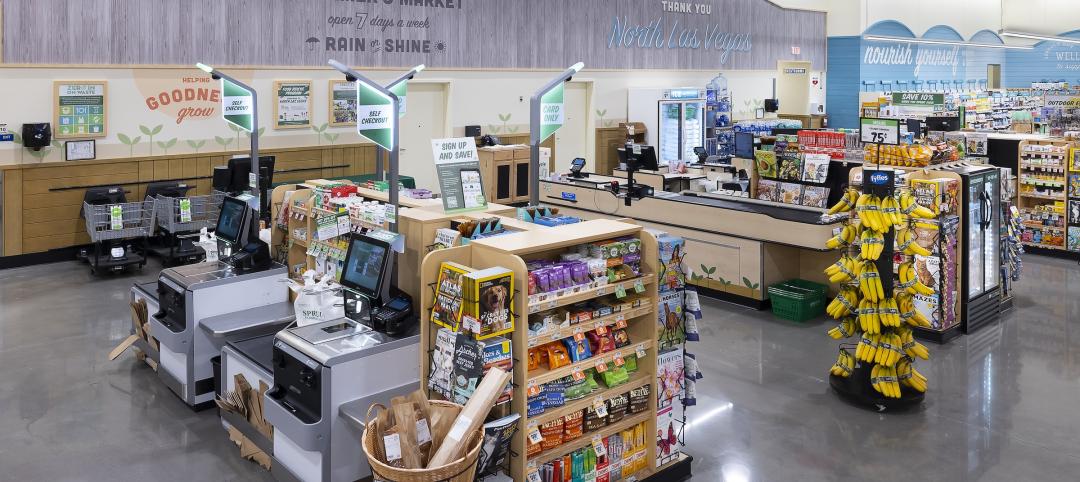As a native Angeleno, I can’t help but lament, as I stroll through various neighborhoods in our city, the once-upon-a-time luminous retail, dining and entertainment boulevards and districts that are no more. From the once thriving college-town and teenage-mecca known as Westwood Village to Third Street Promenade’s shoulder-to-shoulder packed Saturday evenings, I mourn them all. However, the real lightning-rod of my nostalgia is what was, for a decade, the hippest one-mile of street on the planet; the strip of Melrose Avenue flanked by La Brea and Fairfax.
During the late 1980s, Melrose was an amalgamation of everything that was trending in Los Angeles. On any given day of the week, it was common to encounter multiple movie and rock stars, mixed in with the tourists, teenagers, and twenty-somethings perusing the boutiques and eateries. Along with retailers that catered to the Avant Guard and Haute Couture, this stretch of Melrose boasted some of the hippest dining establishments in the city including the classic Chianti’s, the coveted Tommy Tang’s, and the very first Johnny Rockets. It is impossible to overstate the allure of this street.
Why There?
Great streets are generally not initially curated or willed into being. Rather, they emerge organically from unintentional synergies of commercial, business, cultural and economic drivers. These at first disparate, unintentional anchors can, if the chemistry is right between them, provide a symbiotic draw to that area of a city. This in turn creates the daily visitation that ultimately supports an authentic critical mass of retail and dining tailored to those anchors.
The avenue’s anchors were not curated, but rather encompassed that one-mile strip of Melrose magic, creating the alchemy for the avenue to evolve authentically in a unique and inimitable way.
This 1980’s incarnation of Melrose had a behemoth of an anchor only 1.5 miles to the east: Paramount Studios. This buzzing category killer of entertainment industry production and activity essentially guaranteed a constant daily draw of A-List actors and Hollywood moguls frequenting Melrose’s restaurants. Just to the east on La Brea Avenue a lineup of large record labels and recording studios, most notably A&M records, brought in the music industry. A mere half mile west of Fairfax sat the Improv, a nightly nexus of established and up-and-coming comedic talent. In addition, not to be dismissed, this mile long strip of avenue was flanked by the intransient, iconic dining establishments of Pink’s Hotdogs to the east and Canter’s Delicatessen to the west. With Pink’s nonstop line-up of patrons and Canter’s whopping 24 hours a day, seven days a week service to everyone from old-Hollywood elite to established rock bands, these iconic eateries acted as sub-anchors and added legitimate cachet.
Where Did All This Go?
All the drivers that made this strip of Melrose what it was during the 1980’s are intact to this day. Paramount Studios is still an epicenter of Hollywood production activity just as it was in 1986. The Improv continues to deliver its nightly lineup of top shelf comedians. Canter’s and Pink’s also remain the immovable icons they have been for over 80 years. Rather it was us, the collective stewards of this strip of avenue that somehow started to feel that maybe the Melrose a little further west was more desirable, more upscale, or that the new cool up-and-coming neighborhoods would be a better place to settle.
This has become a common theme in our city. Our indomitable West Coast desire to reinvent ourselves and our environment causes us to suffer from success and has us constantly looking for a better block. We did not recognize that the authenticity of this incarnation of Melrose Avenue, was not transferable nor relocatable. When the retail, dining tenants and brands started to depart, it became the death spiral for that incarnation of Melrose Avenue, not replicable anywhere else in the city to this day. Without the alchemy and adjacency of the larger contextual anchors that made this all make sense, it became another piece of Los Angeles lost forever.
The businesses, restaurants, retailers, landlords and guests are not the engineers of a great avenue’s evolution, but they certainly are the stewards of such authentic ecosystems.
The Takeaway.
As long as Los Angeles has the luxury of yet unclaimed streets and areas, and can pick up the pieces and move, or keep expanding and reinventing itself, our great retail districts will continue to fade into memory, a shell of their former greatness. More mature cities don’t have our city’s luxury of simply moving to the next hot spot because the current one just doesn’t seem to be working anymore. These cities appreciate their districts’ distinct avenues for their varied rarity and authenticity, sustaining these places through decades.
I understand the West Coast’s indomitable desire to reinvent – ourselves and our environment. However, I believe that as a community, as a city, we are quickly approaching the precipice where we just can’t pick up and move west, east, south or north. We – the community, visitors, shoppers, diners, landlords and developers, city officials, and certainly any of us in the commercial real estate space – are all the stewards of our great avenues. A responsibility we must take seriously, otherwise they may all suffer the same fate as the once hippest mile of street on the planet.
About the Author

Greg Lyon, Chairman and Principal at Nadel Architecture, is a native Angeleno, growing up a stones-throw from Melrose Avenue on the west edge of Hancock Park. He attended Fairfax Highschool located on Melrose, graduating class of 1984. While attending UCLA, Lyon bussed and waited tables on some of the Avenues trendiest late 1980’s spots, first at Angel City Grill, then at Fellini’s Restaurant.
More from Author
Nadel Architecture + Planning | Sep 17, 2024
Thinking outside the big box (store)
For over a decade now, the talk of the mall industry has been largely focused on what developers can do to fill the voids left by a steady number of big box store closures. But what do you do when big box tenants stay put?
Nadel Architecture + Planning | Jun 14, 2024
AEC inspections are the key to financially viable office to residential adaptive reuse projects
About a year ago our industry was abuzz with an idea that seemed like a one-shot miracle cure for both the shockingly high rate of office vacancies and the worsening housing shortage. The seemingly simple idea of converting empty office buildings to multifamily residential seemed like an easy and elegant solution. However, in the intervening months we’ve seen only a handful of these conversions, despite near universal enthusiasm for the concept.
Nadel Architecture + Planning | Mar 7, 2024
How shopping centers can foster strong community connections
In today's retail landscape, shopping centers are evolving beyond mere shopping destinations to become vibrant hubs of community life. Here are three strategies from Nadel Architecture + Planning for creating strong local connections.
Nadel Architecture + Planning | Feb 6, 2024
The future of grocery store design: It may be time for the checkout aisle to check out
For grocers, the checkout aisle is one of the greatest sources of customer complaints and shrink, which directly affects their bottom line.
Nadel Architecture + Planning | Nov 15, 2023
Should retail developers avoid high crime areas?
For retailers resolute to operating in high crime areas, design elements exist to mitigate losses and potentially deter criminal behavior.
Nadel Architecture + Planning | Sep 21, 2023
The benefits of strategic multifamily housing repositioning
With the rapid increase in new multifamily housing developments, owners of existing assets face increasing competition. As their assets age and the number of new developments increases seemingly day-by-day, developers will inevitably have to find a way to stay relevant.
Nadel Architecture + Planning | Aug 22, 2023
The mall of the future
There are three critical aspects of mall design that, through evolution, have proven to be instrumental in the staying power of a retail destination: parking, planning, and customer experience. This are crucial to the mall of the future.
Nadel Architecture + Planning | Jul 11, 2023
Converting downtown office into multifamily residential: Let’s stop and think about this
Is the office-to-residential conversion really what’s best for our downtowns from a cultural, urban, economic perspective? Or is this silver bullet really a poison pill?














